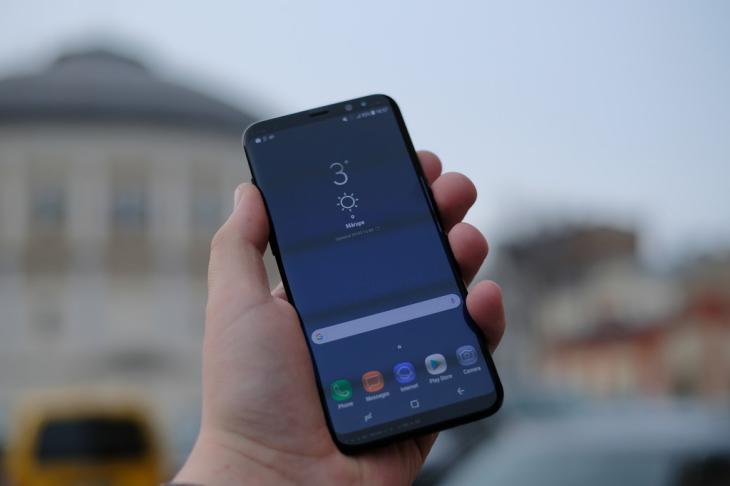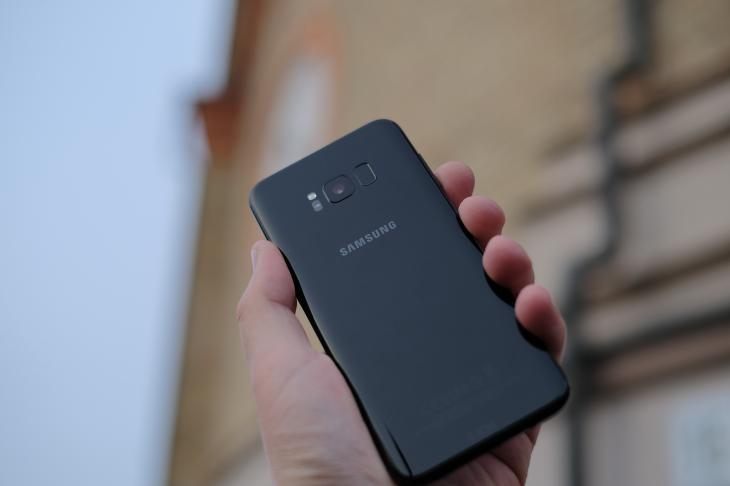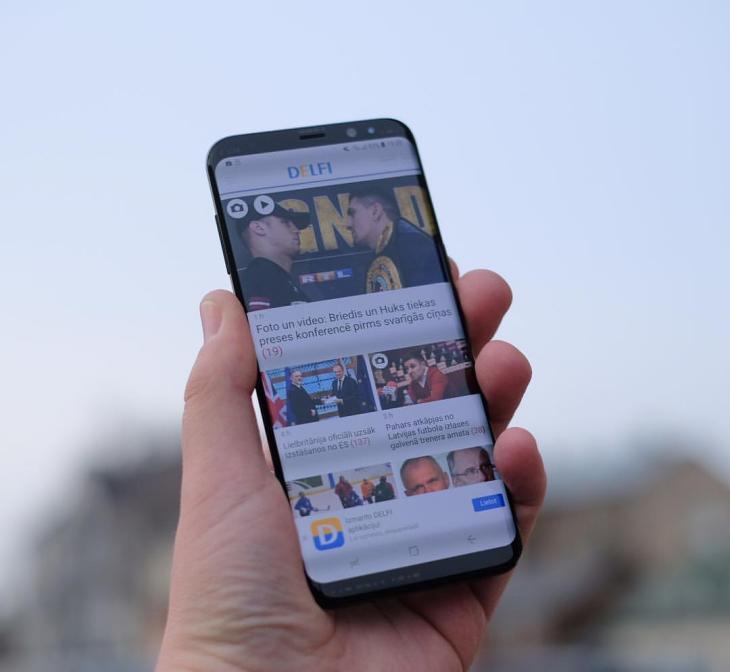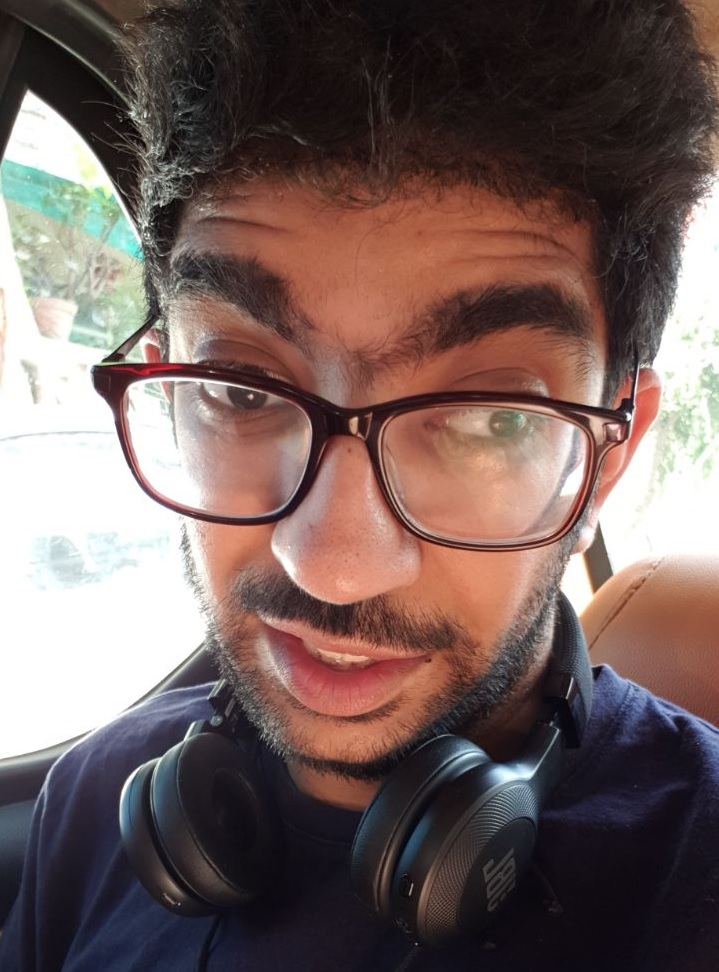Samsung Galaxy S8+ review: To infinity and beyond with aplomb

Samsung's Galaxy S8 and S8+ launched to much fanfare in India on 19 April. Back then, I called it a 'tough sell' at a launch price of Rs 57,900. The S8+ is even more expensive at Rs 64,900. Three months on, and after using the phone for nearly a month, I can safely say that, barring the Google Pixel, this is the best flagship phone by far. In a nutshell, what makes this device stand out is its infinity display, which I will get into a bit later.
If you don't have time to read the entire review that follows, the short gist of it is this: If you have the money, there is no other phone you would think of buying for a few reasons. One, Samsung is a trustworthy brand, despite the fiasco of the Galaxy Note 7 last year. Second, Samsung's displays are by far the greatest, and they keep innovating to stay ahead of the competition. Third, software updates are relatively fast and the camera is flagship worthy.
Samsung shows off, Apple makes phones easier to use
In the past couple of years, Samsung has learned to refine its design and show off. Apple hasn't done much innovating, but they have made their phones easier to use. That's the difference between these two challengers at the top of the smartphone pyramid. Samsung runs on the latest version of Android, while Apple runs on iOS.
I'm not here to talk about Apple's newest iPhone that released late last year. I'm here to talk about the gorgeous Samsung Galaxy S8 and S8+.
Samsung hit a good note with the Samsung Galaxy S7 and S7 Edge last year. Its fresh design and relatively upgraded cameras helped it to its highest profits in years. Prior to Samsung's S8 releasing, there were rumours of it ditching the headphone jack. Thankfully it didn't, because the world isn't ready yet.
There were a couple of hints in the media that the launch would be delayed to get a display with an integrated fingerprint scanner - again, good thing it didn't wait, because Apple is also having mega problems on that front. The Galaxy S8 was a much-needed rebound for Samsung, and I can say with confidence that it has worked for the company.

Infinity display
Samsung's Galaxy S8 is love at first sight, and it's all thanks to that gorgeous looking infinity display. It certainly lives up to its fancy sounding name. "Immerse yourself in a bigger view that still fits comfortably in your hand. Galaxy S8 and S8+ break free from the confines of bezels, offering a smooth, uninterrupted surface that flows seamlessly over the edges," reads the Samsung website. The bezels at the top and the bottom are gone. A larger screen without the need for a larger physical device is what the infinity display brings to the table.
Despite the price, which is clearly out of reach for most consumers, this is one device that most will lust after. While the home and navigation buttons were embedded under the screen, the fingerprint sensor was moved to the back, in a really awkward position. I have zero complaints about the display. I really liked the display on Samsung's mid-range C7 Pro smartphone too, but the one on the S8 and S8+ is miles better.
An awkward back panel

The back glass is protected by Gorilla Glass and is thinner than what has been put on the infinity display. This makes it more vulnerable to drops, so be more careful with it than you'd be with other phones. This, along with the fact that it gets smudgy and covered in fingerprints within just hours, is a downer. It makes the experience slightly unpleasant.
Then there's the fingerprint sensor. Placing it on the rear panel is something a lot of smartphone manufacturers have been doing these days. Samsung though, got it completely wrong with the S8. The fingerprint scanner is right next to the rear camera. That's the biggest annoyance. While trying to place my finger on the sensor, I hit the camera instead of the fingerprint sensor more than once. They're placed so near to each other, I feel like I'm smudging the camera all the time, and that is not good for the pictures I take after unlocking the smartphone.
One more reason not to love this phone is the Bixby button on the left-hand side of the smartphone. Whenever I took the phone out of my pocket, I often hit the Bixby button instead of the power button on the right-hand side of the smartphone. This took some getting used to.

What you get with the smartphone
The Indian variant of the Galaxy S8 comes with Samsung's Exynos 8895 processor and not Qualcomm's Snapdragon 835. The smartphone comes with 4GB of RAM and 64GB of storage, with another variant having 6GB RAM and 128GB storage space. It does have a microSD slot. Storage is expandable to 256 GB for both.
The camera on the front is an 8-megapixel shooter with a f/1.7 aperture and autofocus. What you also get on the front is an iris scanner (there is also facial recognition) that works surprisingly well after the initial hiccups. The primary camera on the rear comes with a 12-megapixel sensor with a f/1.7 aperture. This time, you get Samsung's dual pixel technology.
As mentioned above, the display is 6.2-inches with a resolution of 1440 x 2960 pixels (529 ppi pixel density). It's covered with Corning's Gorilla Glass 5 for extra protection and its body to screen ratio is 83.6%. The handset is powered by a 3,000 mAh battery that has support for quick charging.
Along with that, you get a 3D Touch (home button only), Always-on display, and Samsung's own TouchWiz UI. The smartphone runs on Android 7.0 Nougat. Inside the box, there is a pair of AKG-tuned headphones and support for Samsung Pay.
Performance + battery life

The Galaxy S8's performance lives up to its gorgeous looks. In the professional environment where I used the phone to take notes, pictures, post on all social networks - Facebook, Twitter, Instagram - sent emails and browsed the web, the Galaxy S8 lived up to my expectations. It didn't stutter. It didn't lag. Its battery didn't drain out. It comfortably lasted me a day with some spare charge to tide me over to the morning.
The 3,500 mAh battery lasted much longer than I initially thought. Only under heavy-usage, which involved watching a lot of videos and/or games, did I need to take out my power bank. Otherwise, I safely could reach home without reaching for the charger.
The one thing that drained the battery like anything was Samsung's 'Always-on display'. This is slightly different to Motorola's version. On Samsung phones, the 'Always-on display' means that the display actually is on all the time and shows you relevant information. Motorola's is a slightly modified version where the display only pops up when you move the phone ever so slightly. So for Samsung, this means the battery drains out quicker than you'd like. For Motorola, this feature is welcome as it doesn't consume as much battery as one would think.
Overall, Battery levels were commendable and the smartphone never got warmer than it should have, despite the thin glass at the back.
Camera
Samsung hasn't done much to update the rear-facing camera on the Galaxy S8 and, largely, that's okay. It's okay because the snapper on the back is more than capable. It's almost identical to what Samsung had on last years flagship Galaxy S7 and Galaxy S7 Edge. Barring the Google Pixel and Apple's iPhone 7 Plus (only the portrait mode), Samsung's camera lives up to all expectations. For the S8, Samsung has made some software tweaks - enhanced image processing - making the low-light capture even better.
What's changed is the front camera, where it's been bumped up to a right-megapixel shooter. It also has faster auto-focus and better facial recognition.
Zoom in on an image and the colours feel richer, contrast is better and the camera is that much closer to the Google Pixel. In low-light though, the pictures that came out were simply outstanding. There was almost no blurriness when zooming in.
The camera is not without its flaws though. In some of the images, I noticed a bit of noise and it got worse when I zoomed in. This even happened when the photo was taken in natural light.
Samsung S8 vs S8 Plus
In the past couple of years, the bigger sibling always equalled better performance. That changed with Samsung in 2017. The Galaxy C9 Pro was slower and not as good looking as its younger sibling, the Galaxy C7 Pro. For the flagship S8 series, both phones are almost identical, well, except for its size. Oh, and the battery life is better with the S8 Plus.
A month later. Is it worth a buy?
What's the take home after using the phone for almost a month, you ask? Well, it's been three months since the launch of the Galaxy S8 in India and I must say this is by far the best flagship phone ever launched. Barring a few areas where it could do with massive improvements - looking at you fingerprint scanner and Bixby - the phone is stellar.
Wait for a price drop and snap up the phone as fast as you can. At Rs 57,900 and Rs 64,900 respectively, the S8 and S8 Plus are a tad overpriced. With the Pixel looming around that Rs 40k mark (with all the discounts and sales it's constantly getting), the S8 looks out of its league. Just for that infinity display though, this phone is worth its price and more. And do get a case and tempered glass to go with it.
This phone is much more revolutionary than evolutionary. If Android is your first love and cash ain't an issue, go ahead, walking into a Samsung store and buy this beauty right away because you will not be disappointed.
First published: 18 July 2017, 18:12 IST






![BJP's Kapil Mishra recreates Shankar Mahadevan’s ‘Breathless’ song to highlight Delhi pollution [WATCH] BJP's Kapil Mishra recreates Shankar Mahadevan’s ‘Breathless’ song to highlight Delhi pollution [WATCH]](https://images.catchnews.com/upload/2022/11/03/kapil-mishra_240884_300x172.png)

![Anupam Kher shares pictures of his toned body on 67th birthday [MUST SEE] Anupam Kher shares pictures of his toned body on 67th birthday [MUST SEE]](https://images.catchnews.com/upload/2022/03/07/Anupam_kher_231145_300x172.jpg)






